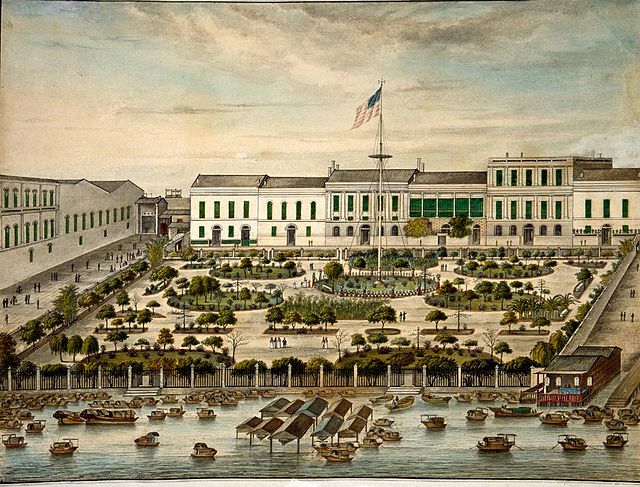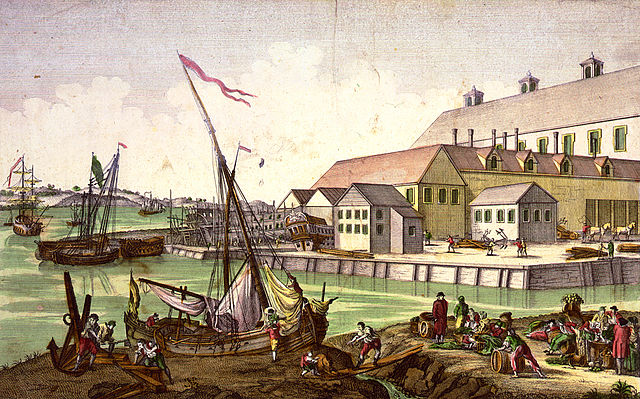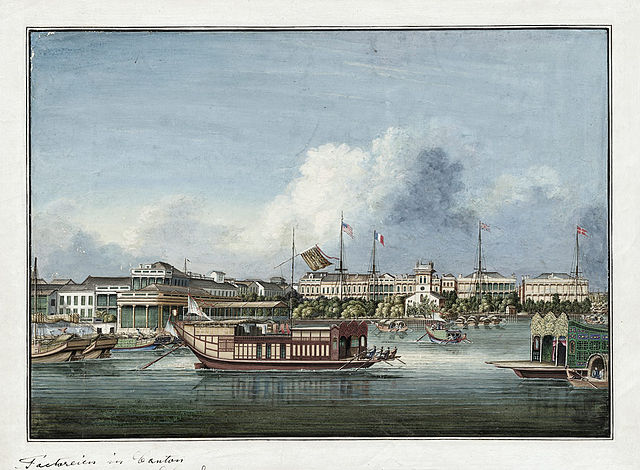The Old China Trade refers to the early commerce between the Qing Empire and the United States under the Canton System, spanning from shortly after the end of the American Revolutionary War in 1783 to the Treaty of Wanghia in 1844. The Old China Trade represented the beginning of relations between the United States and East Asia, including eventually U.S.–China relations. The maritime fur trade was a major aspect of the Old China Trade, as was illegal trafficking in opium. The trade era overlapped the First Opium War, which resulted from an attempt by China to enforce its prohibition on opium smuggling by Western traders and blockade-runners.
The Thirteen Factories, the area of Guangzhou to which China's Western trade was restricted from 1757 to 1842
The gardens of the American factory at Guangzhou c. 1845
Port of Salem, Massachusetts, 1770s
John N. A. Griswold House, built-in 1864 for an American China trade merchant in Newport, Rhode Island
The Canton System served as a means for Qing China to control trade with the West within its own country by focusing all trade on the southern port of Canton. The protectionist policy arose in 1757 as a response to a perceived political and commercial threat from abroad on the part of successive Chinese emperors.
Canton factories c. 1850
Scene in China (1852, p. Vignette)
Canton in 1830







